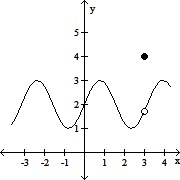Write the first six terms of the sequence beginning with the given term. Then calculate the first and second differences of the sequence. State whether the sequence has a linear model, a quadratic model, or neither.
?
a0 = 1
an = an - 1 + n
?
A. 0, 1, 2, -4, 7, -11First differences: 1, 1, 2, 3, 4Second differences: -1, 1, -1, 1Neither
B. 1, -2, 4, -7, 11, -16First differences: -1, 1, -1, 1Second differences: 1, 2, 3, 4, 5Neither
C. 0, 1, 2, 4, 7, 11First differences: 1, 1, 2, 3, 4Second differences: -1, 1, -1, 1Linear
D. 0, 1, 2, 4, 7, 11First differences: 1, 1, 2, 3, 4Second differences: -1, 1, -1, 1Quadratic
E. 1, 2, 4, 7, 11, 16First differences: 1, 2, 3, 4, 5Second differences: 1, 1, 1, 1Quadratic
Answer: E
You might also like to view...
Solve by using the Superposition Theorem:
R1 = 4.7 Kê, R2 = 3.3 Kê, R3 = 5.1 Kê, E1 = 40 V, and E2 = 20 V.
Find the value of VR .
2

a. 0.488 V
b. 0.732 V
c. 0.363 V
d. 5.04 V
e. 11.44 V
Solve the equation using both the addition and multiplication properties of equality.3x - 8x + 2 = 8x
A. 
B. 
C. 
D. 
Determine the continuity of the function at the given points.f(x) =  at x = 3 and x = 1
at x = 3 and x = 1
A. The function f is continuous at  but not at
but not at 
B. The function f is continuous at both  and
and 
C. The function f is continuous at neither  nor
nor 
D. The function f is continuous at  but not at
but not at 
 Find AB and BA, if possible.
Find AB and BA, if possible.
What will be an ideal response?